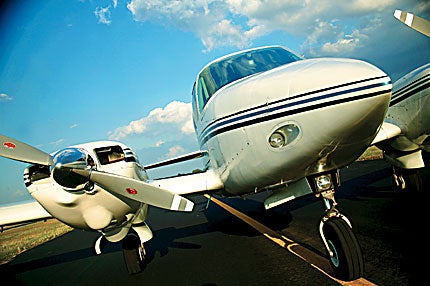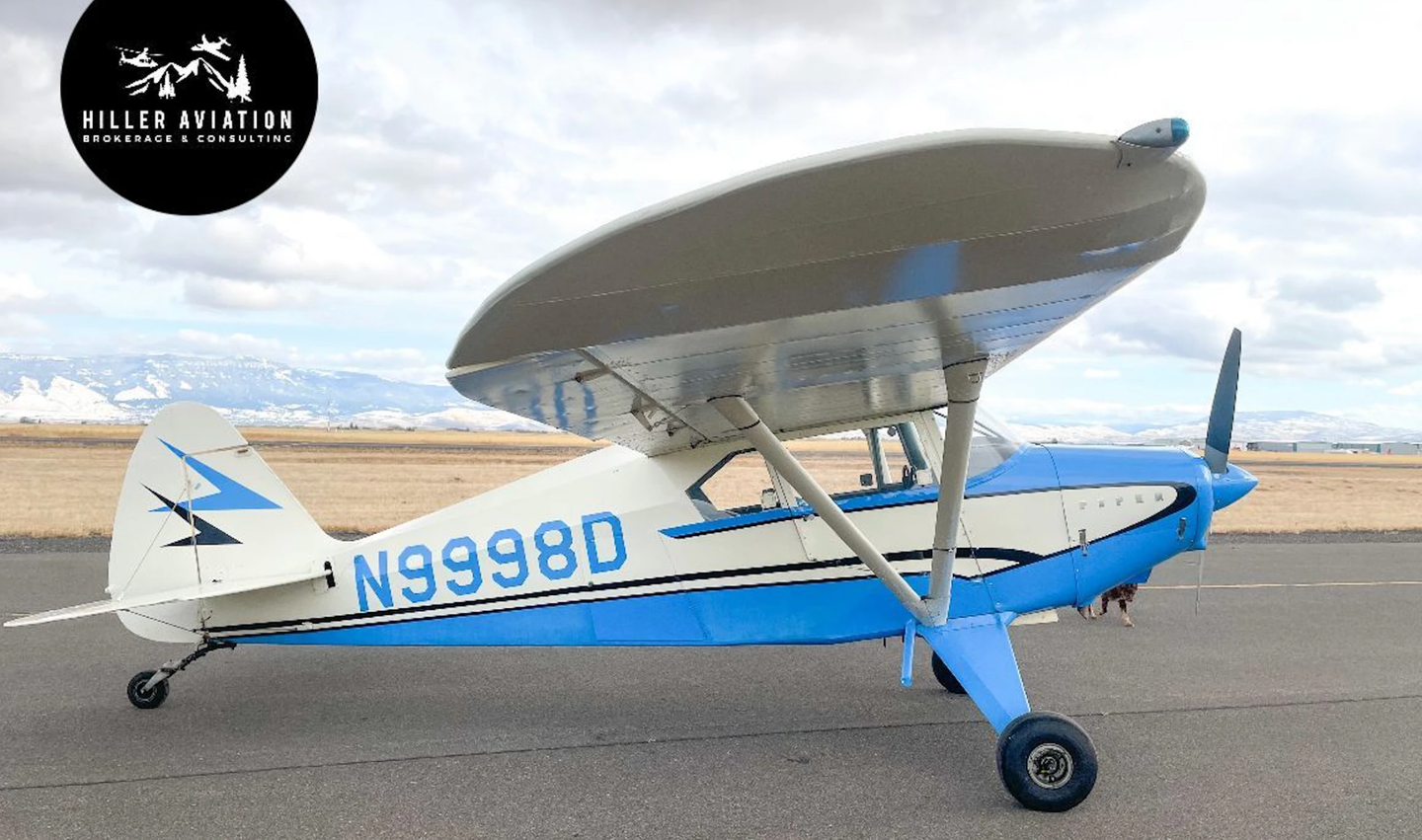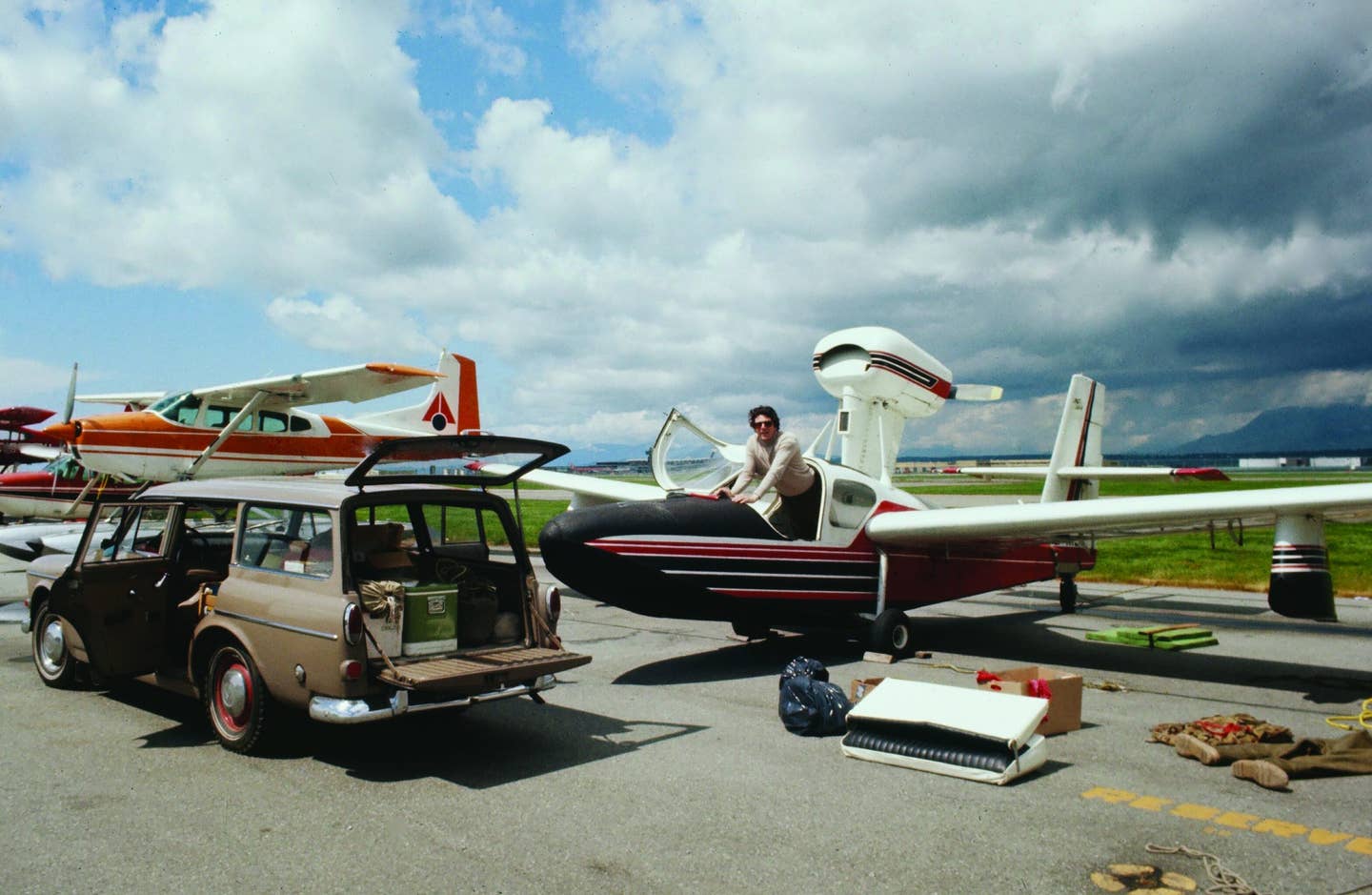Geronimo!
For many light-twin owners, Piper’s Apache is about as good as it gets
 Let's just say that you own a flight school in a huge and major market and you feel a need for a new multi-engine trainer. If you're completely determined to buy new, you have only one choice, really, for a dedicated twin trainer, the Piper Seminole. (The diesel-powered Austrian Diamond Twin Star isn't expected to be available until later this month.) The Seminole, basically a T-tailed, twin-engine Piper Arrow, is a fine little airplane, simple and easy to fly, but the plane's average-equipped, out-the-door price of $450,000 may give some buyers pause. Now, imagine that there was an alternative airplane available for at least $100,000 less, and it offers you a considerably larger cabin, a bit more payload, perhaps the same or better performance, similar operating and handling economics and even more benign flight characteristics.
Let's just say that you own a flight school in a huge and major market and you feel a need for a new multi-engine trainer. If you're completely determined to buy new, you have only one choice, really, for a dedicated twin trainer, the Piper Seminole. (The diesel-powered Austrian Diamond Twin Star isn't expected to be available until later this month.) The Seminole, basically a T-tailed, twin-engine Piper Arrow, is a fine little airplane, simple and easy to fly, but the plane's average-equipped, out-the-door price of $450,000 may give some buyers pause. Now, imagine that there was an alternative airplane available for at least $100,000 less, and it offers you a considerably larger cabin, a bit more payload, perhaps the same or better performance, similar operating and handling economics and even more benign flight characteristics.
Well, there is---sort of. It's called the Geronimo. Although it's not a totally new kind of airplane, it's about as nice a remanufactured light twin as you can buy. "Remanufactured" is the key word. It means that the airplane is essentially rebuilt from the ground up with new or reconditioned parts.
Piper's first prototype of the Apache, officially designated the PA-23, was originally the Twin Stinson, not a Piper design at all. Like many prototypes, it was predictably underpowered with two 125-hp engines and a twin-rudder empennage à la Beech 18. Fortunately, after Piper acquired the Stinson, much saner heads prevailed, and the initial production of the Apache sported a pair of 150-hp Lycomings as well as a conventional tail. This still left the Piper Apache underpowered. Regardless, it nevertheless became an extremely popular airplane, a large, roly-poly bear cub of a multi-engine trainer, gentle, friendly and a willing teaching machine.
Part of the reason for the Piper PA-23-150's near-universal acceptance was that it had the market cornered. In 1954, it was the only multi-engine flying classroom available on the market. Today, Piper still has a monopoly on that honor with the Seminole. In contrast to the very modern, slick, swept, quarter-century-newer Piper Seminole, the original Piper Apache had manifested itself with the aerodynamics of a pet rock and all the charisma of a speed bump.
With both engines running true, the Apache was a reasonable three and/or four-place transport, although in single-engine mode, the PA-23-150 was barely adequate to the multi-training mission. The later 160-hp Apache was a definite and complete improvement, but still a marginal machine with an engine out.
Price ruled all, however, and the 1954 Apache was, by far, the least expensive twin on the market, not that much more costly than the single-engine Beechcraft E35 Bonanza. At the time, the only other light-medium twins that were available were hardly so-called trainers, the cabin-class Aero Commander 520, at $73,260, and the Beech C50 Twin Bonanza, a two-row six-seater, not surprisingly at the top of the class at $91,355. A year later, Cessna introduced the 310, but with 240 hp on each wing and a gross weight of 4,600 pounds, the 310 was more than 1,000 pounds heavier than the Apache and hardly intended as a trainer. It also cost nearly $60,000.
In very stark contrast, the original Piper Apache typically flew away from Piper's Lock Haven, Pa., factory at a mere $36,000. You get the idea. As a result, Piper built just over 2,000 of the bulbous PA-23 Apache 150s as well as 160s between 1953 and 1961, and the airplane proved to be one of the most popular multi-trainers of its day, flying in between a pair of Lycoming O-320s. The same airframe was later to spawn the Piper Aztec, featuring similarly bulletproofed 250-hp Lycoming IO-540s. (There also was a super version of the Piper Apache, which came with 235-hp Lycomings, but only 100 examples of it were built before Piper discontinued the Apache altogether and concentrated on selling Aztecs.)
The Piper Geronimo conversion came along in the mid-1960s. Despite the Piper Apache's warts, or perhaps quite more accurately, because of them, the Apache was a prime candidate for a modification. In the never-ending search for more efficient methods of overcoming gravity, three partners from Seguin, Texas, came up with the brilliant idea that given 180-hp engines, a larger vertical stabilizer for additional rudder authority, a cleaner, extended, Twin Comanche-style nose (which can come complete with its own baggage compartment), Hoerner wingtips and a host of other aerodynamic improvements, the Apache could become the airplane that it should have been right from the beginning. The partners formed a company then known as Vetco, which later evolved to Seguin Aviation, and the Piper Archer Geronimo was launched.
As the most popular of several Piper Apache mod packages, the Geronimo has changed hands four times, and now Diamond Aire of Kalispell, Mont., is the current owner of the stack of STCs that comprise the Geronimo. Diamond Aire acquired the mod package and all associated tooling in 1996.
Diamond Aire CEO John Talmage is quite predictably enthusiastic about the transformation of the Apache to a true-performance twin. "The stock airplane was almost ideally very suited for a huge modification," comments Talmage. "The engine swap is relatively easy, many of the other mods are practically bolt-ons, and the universe of airplanes is huge, over 2,000. Our best information is that some 250 to 300 full conversions are flying, plus an even larger number of partials." Talmage sells the full Piper Geronimo conversion for $295,000.
Considering that the average stock Apache sells for only about $35,000 these days, it might be quite a stretch to really imagine Diamond Aire selling many full $295,000 conversions. Conversely, some folks do love their Apaches enough to make such major investments. The pudgy Piper may not have the cult following of a Beechcraft Bonanza or Aerostar, but it's nevertheless a popular machine. Ever since the advent of the Cougar/Duchess/Seminole trainers, Apaches have become predominantly personal transports, and some owners are quite willing to spend significant sums to reinvigorate them to better-than-new condition.
It's very important to note that the full conversion results in an airplane that's superior to the original one in virtually all respects. The Piper Geronimo is, after all, a fully remanufactured, ground-up and rebuilt airplane, not just a fancy name for an engine swap. It's about as close as you can come to new, but at significant, savings. In addition to range, handling and performance improvements, the full Geronimo conversion turns the Apache into a six-seater---okay, more of a four-plus-two---and that gives it a definite advantage on the personal market.
Continental Airlines captain Frank Young keeps a Piper Geronimo Apache as a pet at Montgomery County Airport in Conroe, Texas, near Houston. Young purchased his modified Piper Apache five years ago from an owner in Apple Valley, Calif., where the airplane had once served as a demonstrator for the third modification company, Southwest Aero-Mods.
During the workaday world, Captain Young flies big 767s between Houston, Honolulu, Guam and Tokyo, but his off-duty passion is his very well-equipped Geronimo Apache. By any measure, Young's Geronimo is an outstanding example of the type.
Typical of most airline pilots who love anything aviation outside of the cockpit of their Boeing, McDonnell Douglas or Airbus, the captain flies his airplane all over the U.S., especially during air-show season. Captain Young is a family man who believes that the converted Piper Apache is a true bargain with quite an impressive, near-airliner comfort, true four-passenger capacity, good reliability, reasonable speed numbers as well as one of the market's most benign single-engine flight characteristics typical of a light twin.
"I travel with my family quite a bit, and the Piper Geronimo is popular with practically everyone," says Young. "It has a big-airplane feel inside. The cabin is relatively large with plenty of room in all kinds of directions, and you don't feel constrained when climbing in or out. In addition, it's a quiet machine that's well-insulated against wind and engine noise, and the nose and wing-locker baggage compartments allow you to carry all the luggage that you need and help balance the cabin passenger load.
"Standard fuel on the Piper Apache was 72 gallons, but practically all of the original buyers purchased the twin 18-gallon auxiliary tanks for a total of 108 gallons. One of the included options that was offered on the Piper Geronimo conversion was another 48 gallons in the Hoerner wingtips for a total of 156 gallons. My airplane has the tips, but not the tip tanks, so max fuel is the original 108 gallons. N4411P has a useful load of 1,377 pounds, and when I top off the 108-gallon tanks, it leaves me with a still reasonable 729-pound payload. That's four people plus baggage, and I fly it that way often."
The airline captain records a fuel burn of 9 gph per engine on his Geronimo, seemingly irrespective of altitude. "I run 75% power virtually all the time except when the weather forces me to climb up high, and my Piper Geronimo burns a total 18 gph consistently," says Young. "That allows me an easy four hours of endurance plus IFR reserves, but I rarely need even that."
The primary beneficiary of any power increase is always climb performance, and the Piper Geronimo certainly reflects that improvement. According to Young, climb at the increased 3,800-pound gross with both engines turning full-on power runs about 1,200 to 1,300 fpm, as much as 1,500 fpm with only two up front.
More impressive, however, and far more significant for safety, is its single-engine performance. Young, who also is a CFII, tutored both of his sons through their multi-engine ratings in the Piper Geronimo, and for that reason, he has had occasion to feather engines as high as 9,000 feet. "There's still some climb left up there if you're doing everything right," comments Captain Young, "but the engines are so reliable that it's hard to imagine a situation that would cause a total engine failure."
With only one engine feathered, the Geronimo's aerodynamic and power advantages significantly improve flight control at a VMC of 64 knots (72 mph in Piper Apache-speak). In addition to that, the extra 20 hp and several aerodynamic improvements more than double the original Piper Apache's 240-fpm sea-level, single-engine climb rate.
Equally significant, the single-engine service ceiling improves from 6,750 feet to 12,000 feet with the Geronimo mod package. That means that you could lose one mill and still maintain IFR MEAs over anything except the mountain West.
You might not expect a mere 12% in power increase to generate any notable cruise-speed improvement, and you'd be correct if power was the only upgrade. The Piper Geronimo's engine swap is definitely the most expensive element of the conversion, but other features also contribute to the Piper Geronimo's performance improvements.
Diamond Aire's Talmage suggests that the horsepower is far from the only upgrade. "We've got aerodynamically cleaner cowls, an extended nose, a faired windshield, wheel-well doors that fully enclose the main gear, better wingtips, flap gap seals and a raked windshield. They all help in the subtraction of drag and enhancement of the cruise speed," explains the CEO. "You can't expect to realize a big cruise improvement simply by transplanting the larger engines."
There also are a host of convenience mods to improve aesthetics, a third side window, inflatable door seals, a totally new interior upgrade, cargo door, super-soundproofing, double-pane windows and plenty of other upgrades.
The Piper Geronimo conversion isn't totally confined to the original Apaches. Talmage reports that there are quite a few owners who have made Geronimos of their Apache 235s---using the 235-hp engines, of course---and wound up with the next best thing to an Aztec.
In cruise speed, the result of the full Geronimo modification is a realistic 15 to 20 knots more. Since the original Piper Apache 150 was far from the so-called fast lane---the airplane was working hard to produce 145 knots---a typical Piper Apache Geronimo conversion delivers more like 160 to 165 knots on a smooth day at optimum altitude on an ISA day with everything trimmed, all the vents closed and perfect rig. Young blocks his airplane at 150 knots and realizes that average most of the time.
At the opposite end of the flight, the airplane's considerable aerodynamic improvements contribute to a reduced stall speed and a much better short-field performance. Captain Young doesn't often operate his Geronimo into short runways, but he's glad that the capability is there in case he needs it.
The full Geronimo conversion does everything better than the Piper Apache. It climbs much quicker, flies faster, is more efficient, looks better and is a safer twin than the original Apache 150. It's true that the original airframes are 50 years old, but it infuses new life into the original twin.
SPECS: Piper Geronimo N4411P

Subscribe to Our Newsletter
Get the latest Plane & Pilot Magazine stories delivered directly to your inbox






